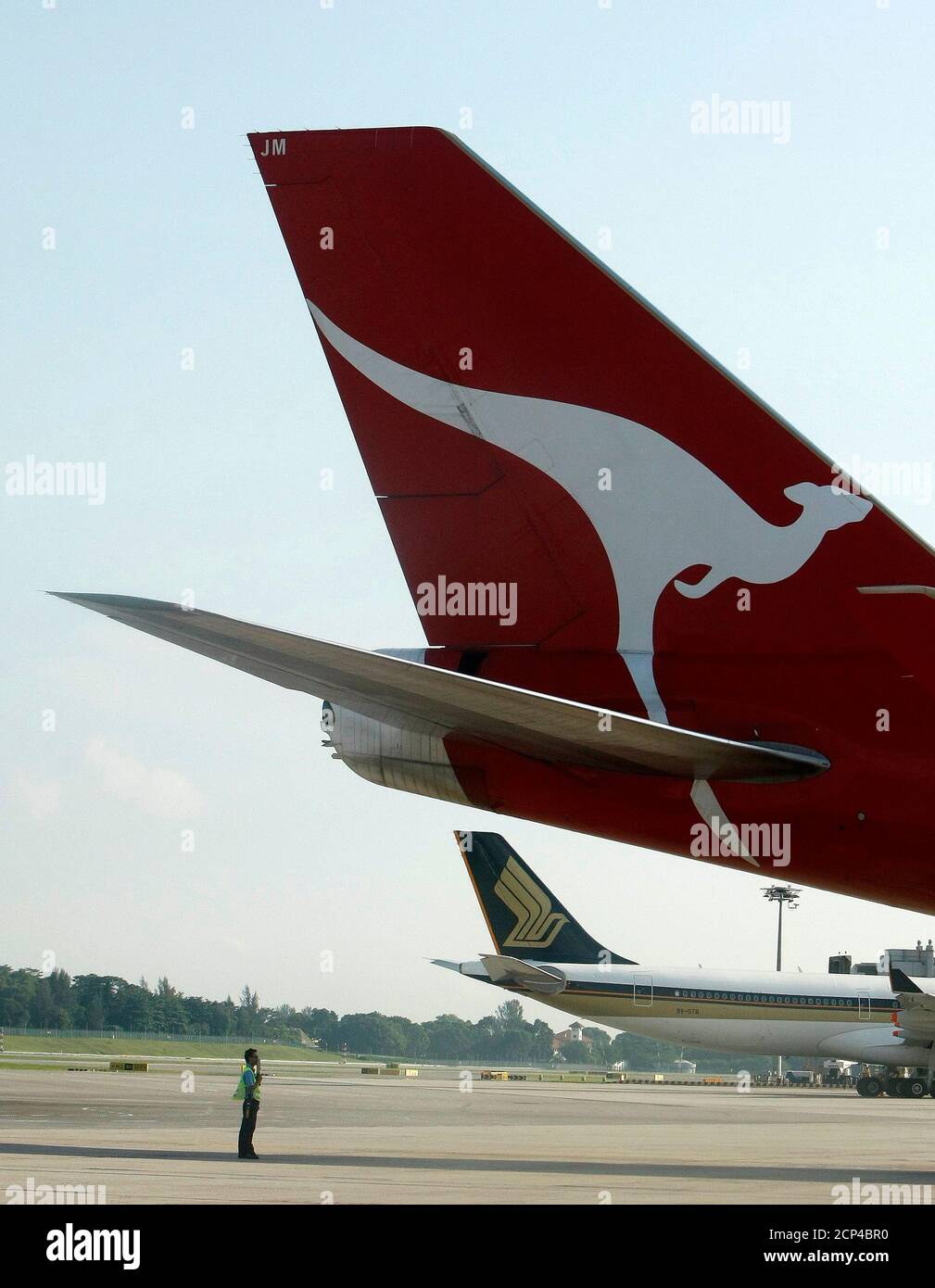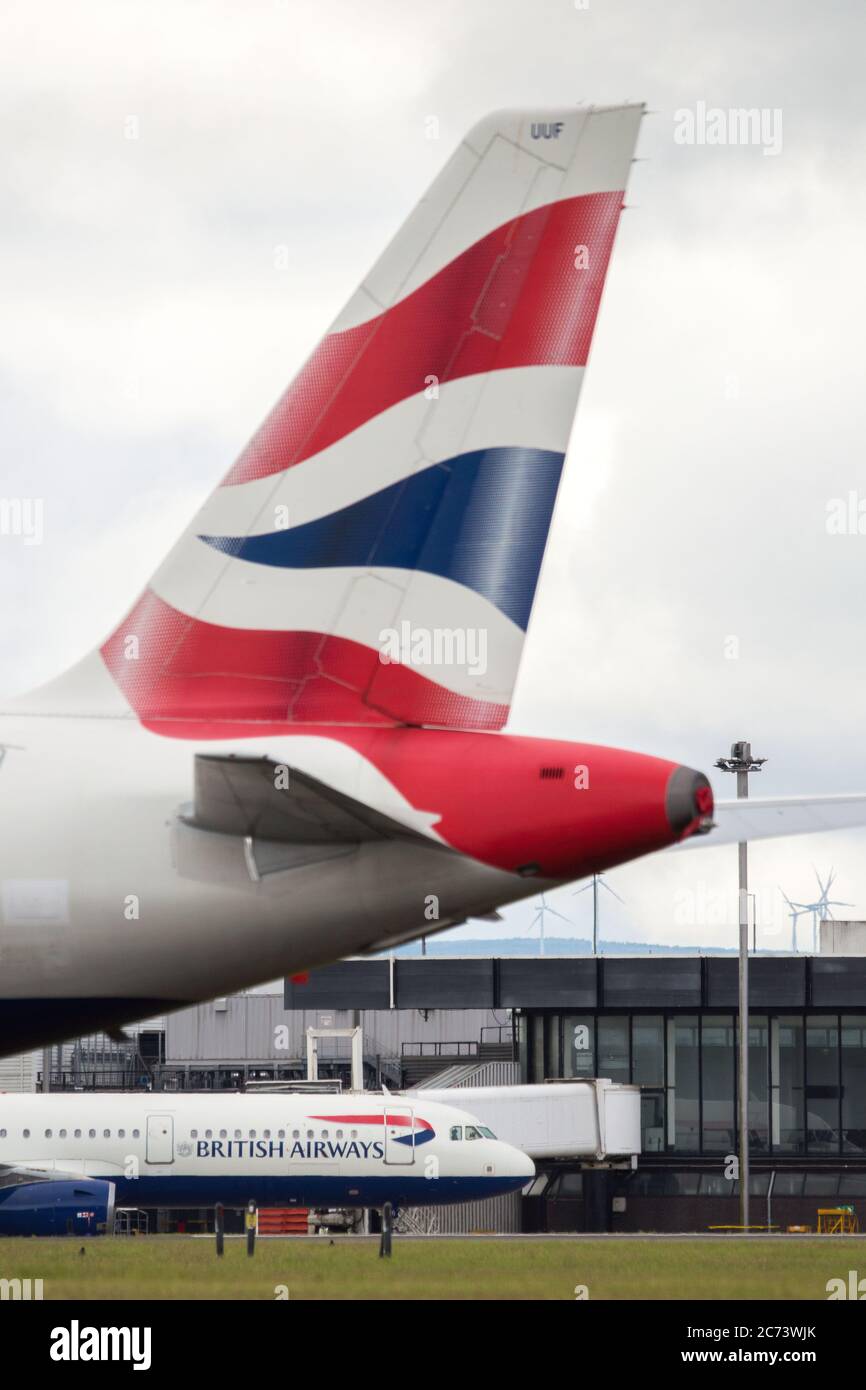Tail Stand Aircraft - This article contains references to the products of one or more of our advertisers. We may receive compensation when you click on a link to that product. Terms apply to the offers listed on this page. For an explanation of our Advertising Policy, visit this page.
In the clip above, a Delta Airlines Boeing 737 leans on its tail while parked at the gate. If you look closely, you can see the bag released from the front cargo hold. What happened was that too many bags, and passengers, were taken from the front of the plane instead of the back. The results? The slow movement at this gate, no doubt startled the ground operations team and the passengers on board. (The 737 returned to its normal position in less than a minute.)
Tail Stand Aircraft

While it's funny to watch, it's not a joke for airlines. It is possible to put the plane out of service to check the tail, assuming it is made in contact with the ground, and the front passenger door, to make sure it is not damaged at the gate.
Electric Motor Test Stand Will Help With Future X Planes
These seesaws are a rare occurrence for passenger jets; it is more common for cargo planes. A seasoned ramp worker I spoke with said he had experienced a tilted airplane only once in his career, at JetBlue. The plane is not completely tilted on its tail, but it comes very close, with the nose gear a few centimeters off the ground. He said the team immediately stopped unloading items from the front of the plane and the crisis was averted.
This happens because the airplane is like a big seesaw with a pivot in the middle. The center of gravity of the aircraft is usually close to the landing gear, by design. But the center of gravity is not fixed. Imagine a seesaw where the fulcrum can move. That's what happens when you add fuel, passengers or baggage at different weights for each flight. The center of gravity for the aircraft must be within the published and tested limits established by the aircraft manufacturer and approved by the regulator.
Airlines use load planners, which, as the name suggests, plan for the expected and actual load of the aircraft - the weight of passengers, the amount of fuel, food on board and cargo. Keeping weight and balance within limits is critical to aircraft performance and safety, and it's not just on the ground. In 2003, an Air Midwest Beechcraft airplane stalled and crashed because too much weight was added to the rear cargo hold of the airplane, causing it to become unstable.
Weight and balance are so critical that the Federal Aviation Administration has issued a guide for operators, and it is part of the thinking for every pilot from the beginning of their training.
Aircraft On Stands Hi Res Stock Photography And Images
The Boeing 737 has been lengthened with each progressive model until it reaches 138 feet and two inches with the 737-900 model, about nine feet longer than its smaller brother, the 737-800. This extra length is a concern for the operator. United Airlines issued these instructions to pilots: "If the bags are not lifted quickly and the passenger stops moving forward to get off the plane, the nose wheel could come off the ground," according to a report in AirlineWeekly.
To avoid tipping, some planes also use a simple but effective device: a tail stand, basically a big pole used to prevent accidents like this. It is kept in the rear baggage compartment and used as soon as the plane reaches the gate.
And you can see in the video below, the tail stand is actually not a stick, but a mechanical device. You can see it in motion as the weight shifts from back to front on this Alaskan twinjet.

On some flights, especially with the light Boeing 737-900 and Dash-8 aircraft, flight attendants will ask passengers to move forward in the cabin and in some cases the airline dispatch team will ask that ballast - sandbags or rubber boards - be loaded. to hold the next cargo. I have personally been on several flights like in Canada where the weight had to be loaded for weight and balance issues.
Seconds Before Crash, Passengers Knew They Were Too Low
Mike Arnot is the founder of Boarding Pass NYC, a New York-based travel brand, and a marketing consultant for airlines, none of whom appear in this story.
Featured image: An MD-11 cargo plane flips on its tail while unloading cargo at LAX in 2004 (Photo by Ken Hively/Los Angeles Times via Getty Images)
Mike Arnot is the founder of Boarding Pass NYC, a New York-based travel brand and marketing consultant for airlines. A private pilot, he can sometimes be found in the skies of New York City.
Many of the offers that appear on this website are from companies that The Points Guy UK receives compensation from. This compensation helps pay the costs associated with running our website, and incurs no additional costs to you. This site does not include all credit card companies or all available credit card offers. Please see our advertising policy page for more information.
Forgetting The Tail Stand
Editor's Note: The Points Guy UK is independent; Opinions published here are always peer-reviewed, with final editorial approval. Information, including card rates, product prices and fees, is presented in the review accurately as of the review date - please check the product page for the latest information. Stack Exchange is a question and answer site for aircraft pilots, mechanics, and enthusiasts. It only takes a minute to register.
Aircraft Tripod Jack It is used to support the aircraft parked to prevent the tail from drooping or falling to the ground. When the passengers in the front get off the plane, the plane becomes tail heavy and the tail will droop..... If necessary, they are pulled to the tail and prepared by human power. Once set, no jack supervision is required until the aircraft is ready to return.
Do any commercial aircraft have to be supported this way every time they load/unload? Sounds like a lot of work for the ground staff. Is this a legacy tool or is it still in use today?

Tripods are mostly found on cargo planes (and combis) because of the severe cg displacement there is (especially for front loads). A good example is Boeing 747. Also used in DC10 / MD11 used as a freighter.
A Look At Why Certain Aircraft Need Tail Stands
Some passenger planes are prone to tipping (the 737-900 comes to mind) and are usually supported by a mast instead of a tail stand (the same procedure is used in the KC-135 tanker as well). For example, Boeing 737-932ER with tail support.
Tail support is not really needed and loading can be done sequentially (from front to back) for safe operation, but used as a precaution. In some aircraft (such as the ATR-72 and Saab 340, the so-called pogo stick) a small tube is attached to the rear fuselage to prevent tipping during loading/unloading.
The DC-8 freighter uses tail braces as a safety measure. As I remember, if you load it correctly, support is not needed, but people don't always do that. Wing forward cargo door. I have long thrown my DC-8 weight & manual balance, but as best as I can remember, the correct protocol is to put the ULD forwardmost that you want first and slide it to the front door position. Next you will put the rearmost ULD, but then move it back far enough to turn the next ULD, then move it and the previous one just back enough to turn the next ULD, and so on. At some point you have enough weight in front of the main gear to start moving the pallet again. If you miscalculate, the plane will sit on the attached tail support. This was reported to happen in Newark, as I recall, in the early 1990s, but they have neglected to install tail support. The airplane sat on its tail.
The same attention to balance is also required when disassembling. Read this link for the unloading accident when the tail brace collapsed, causing one of the cargo pallets to roll into the tail of the cargo compartment. Three loaders were able to get out of the way of the pallets to escape, but the fourth got his leg caught, sustaining a serious injury.
This Is How We Prevent Tilting Of A 737 900!
I work for UPS, we open the A300 almost every day. This is the only plane we use to stand tail. Around the airport in FEDEX, they also get A300 but they don't use the tail stand, So I guess it depends on the company.
At that time I was weight and balance / loading qualified for all types of B747. The vertical tail is mainly used for freighters. If I have to change a full load (for example all and reload) and a crew familiar with the aircraft .. , then I won't worry too much about tipping the carrier. But for the Combi 747, I would say that a vertical tail is absolutely necessary! Especially for transit flights where everything happens at once.
A fully loaded 747 Kombi

Aircraft engine overhaul stand, aircraft engine test stand, aircraft tail stand, aircraft tail number lookup, aircraft tail, model aircraft display stand, aircraft tail light, tail stand, aircraft stand, aircraft tail number database, aircraft tail number search, aircraft engine stand
0 Comments